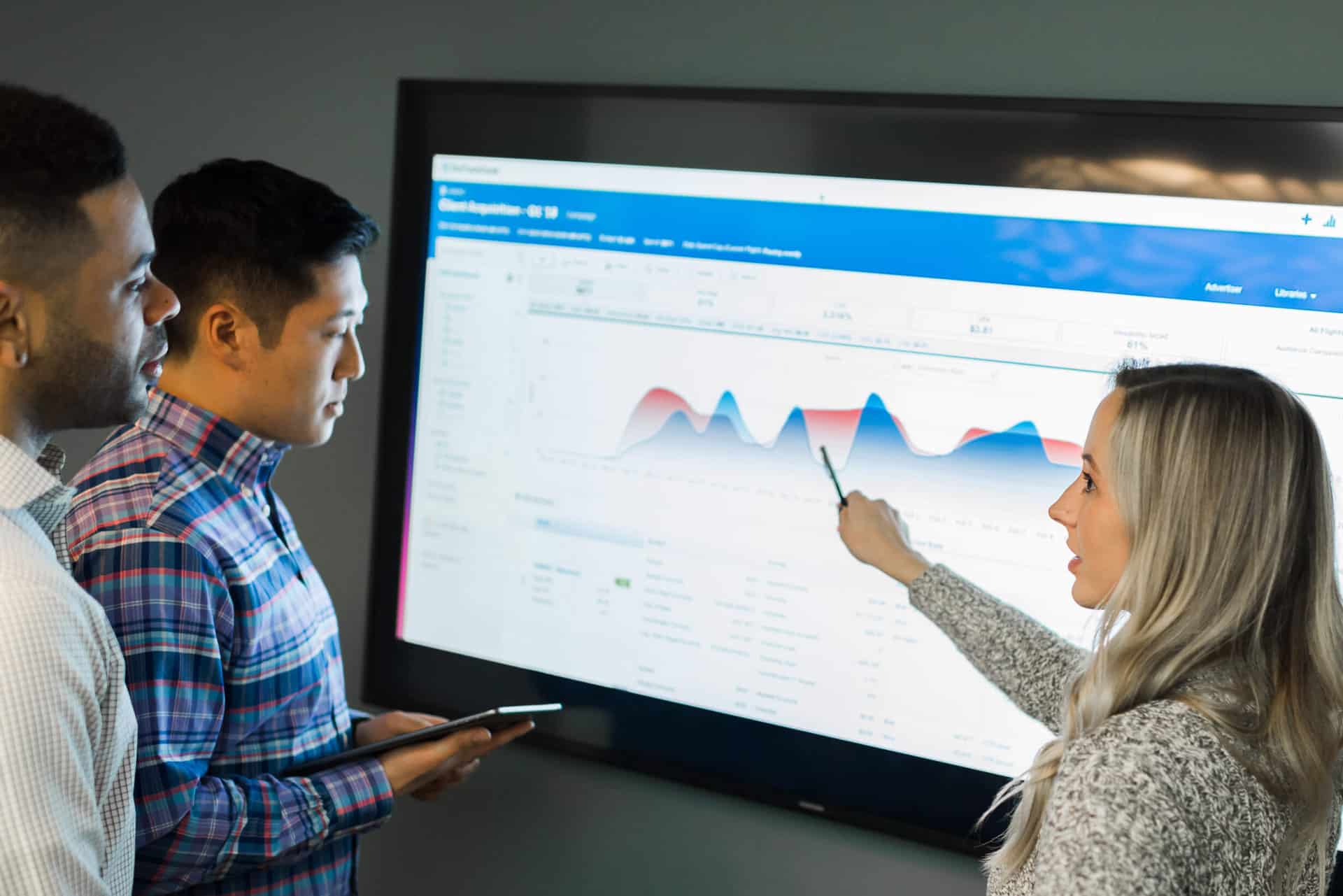What if you could show ads for your dispensary to any cannabis shopper who visited your competitor’s store? Or get your audio ads heard by yoga enthusiasts in a certain zip code? Or target your B2B campaign at in-state businesses most similar to the ones already in your CRM?
Believe it or not, these are things you can already do with programmatic advertising technology—the thing is, most cannabis and CBD marketers don’t even know what programmatic means yet. Let’s jump into that part first.
What Is Programmatic Advertising?
As MarTech Advisor defines it:
“Programmatic advertising is the real-time buying and selling of ad inventory through an automated bidding system. Programmatic advertising enables brands or agencies to purchase … ad slots for digital out-of-home (DOOH), online, streaming, TV, video and voice ads.”
Over the last decade, digital ad spending has jumped from $26 billion to $151 billion per year. Today, about 70% of digital ads are bought and sold using programmatic ad tech, which automates the negotiation and purchasing process to let sales happen in a matter of milliseconds. Rather than having to buy ads individually ahead of time, programmatic platforms now connect advertisers with hundreds of thousands of available slots instantaneously, while algorithms help purchasers decide where to run ads, when to show them, and how much to pay.
These platforms also aggregate data from a huge array of providers, which lets advertisers choose their audience by attribute—long-distance runners ages 21 to 30 living in Colorado with a known interest in CBD, for instance. For any brand looking to get a leg up on the competition—particularly in a fast-moving industry like cannabis—the benefits of leveraging programmatic are numerous.

Why Use Programmatic Ads for Cannabis and CBD?
Programmatic platforms are invaluable to cannabis and CBD businesses looking to advertise digitally because they offer an alternative to Facebook and Google, both of which have policies of rejecting cannabis ads. While these platforms, together known as “the Duopoly,” account for about half of US digital ad spending, programmatic platforms unlock ad inventory across the other half of the digital ad sphere. Huge numbers of high-traffic, mainstream sites will accept programmatic cannabis ad buys, including the likes of USA Today, HuffPost, Newsweek, Politico, and ESPN.
Which programmatic platform to use depends on whether you’re a plant-touching or CBD-specific business: Both industries are able to run display ads on mainstream websites, they just use separate services to do so. Hemp and CBD brands as well as ancillary businesses are able to use mainstream programmatic technology: At PrograMetrix, we help our CBD clients run ads through The Trade Desk. For all other cannabis brands, it’s currently best to use a cannabis-specific ad buying platform; at PrograMetrix, we partner with Safe-Reach for this purpose.
Each programmatic advertising channel offers unique benefits and capabilities for cannabis marketers: Learn more about the features of individual channels below.
Display Ads for CBD & Cannabis

Digital display ads are already transacted almost entirely through programmatic ad tech: This year, 85% of them will be purchased programmatically. If you’re running display ads for cannabis or CBD, programmatic ad buying is a must.
One of the best things about running programmatic display ad campaigns is the ability to A/B test distinct ad sizes, reallocating resources in real time to the ones with the highest likelihood of conversion. For example, if early results of your campaign show that vertical banner ads are twice as likely as horizontal ones to drive clicks to your website, you can decide to pay twice as much for a vertical banner ad impression, and only half as much for a horizontal one.
Mobile Ads for CBD & Cannabis
According to Inc., the average person spends more than four hours per day on their mobile device, meaning mobile ads are a must in any industry. When building programmatic mobile campaigns, businesses can target based on mobile activity—for instance, people who’ve downloaded cannabis apps like WeedMaps, Leafly, or Eaze.
Another popular mobile marketing technique is known as geofencing: Using mobile data, cannabis and CBD advertisers can target adults near certain locations that may be relevant to their campaign, such as music festivals, industry events, or competing cannabis stores.
Native Ads for CBD & Cannabis

Native advertisements are ads that blend into the surrounding content of the platform they’re shown on. A few basic creative elements—copy, an image, and a click-through link—are all it takes to run native advertisements in a wide variety of locations.
Running native ads on mainstream websites can work well for cannabis and CBD brands because the surrounding content normalizes the ad: For many people, clicking on a cannabis ad will feel less intimidating when it’s not on a site like High Times.
Digital Audio Ads for CBD & Cannabis
Audio represents an up-and-coming ad format in the programmatic landscape, and the share of audio ads is expected to increase significantly in the coming years. Benefits of audio advertising include a high likelihood of an engaged audience (think commuters sitting in traffic) and 100% share of voice during your audio spot (i.e., no one else’s advertisement is playing during those 30 seconds).
Connected TV Ads for CBD & Cannabis
Another up-and-coming channel for programmatic advertising, connected TVs offer many of the same benefits that streaming audio channels do, including an engaged audience, 100% share of voice, and the ability to leverage this channel early before other cannabis businesses start to. Connected TV ads aren’t governed by the same rules as broadcast TV ads, and they allow advertisers to reach potential customers in the comfort of their own homes.
Emerging Advertising Techniques for CBD & Cannabis
A few key channels are currently trending for cannabis ads in the programmatic space, including digital audio, connected TV, and geofenced mobile. In the next few years, we expect brands to begin adding some budget for digital out of home, or DOOH, inventory like digital billboards. Voice advertising is also expected to become a major channel as virtual assistants become pervasive.
While the ad industry continues to evolve, we can be certain of one thing: As programmatic fully permeates digital advertising over next few years, businesses who’ve been leveraging programmatic technology from the earliest opportunity will have a huge head start.
